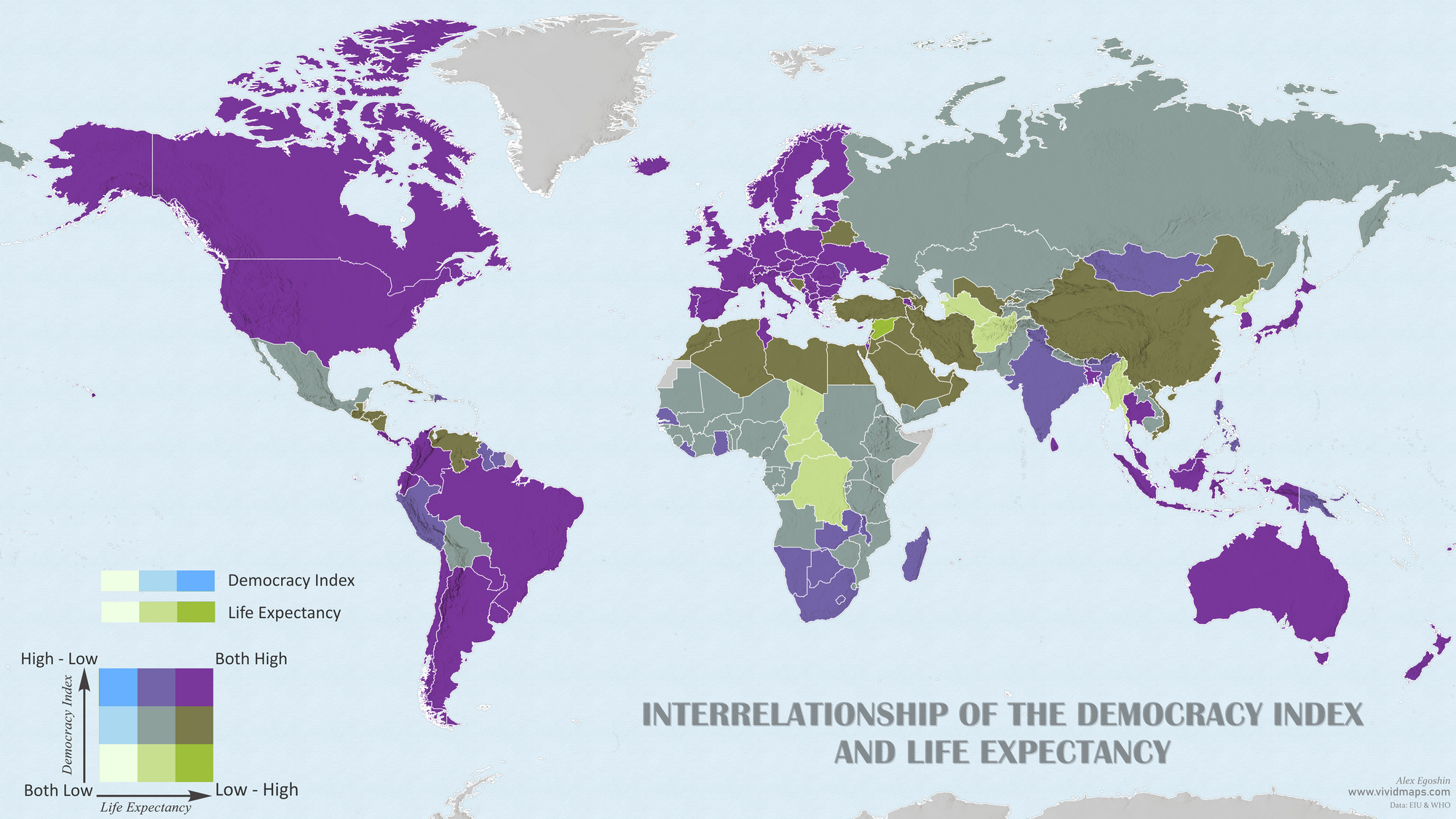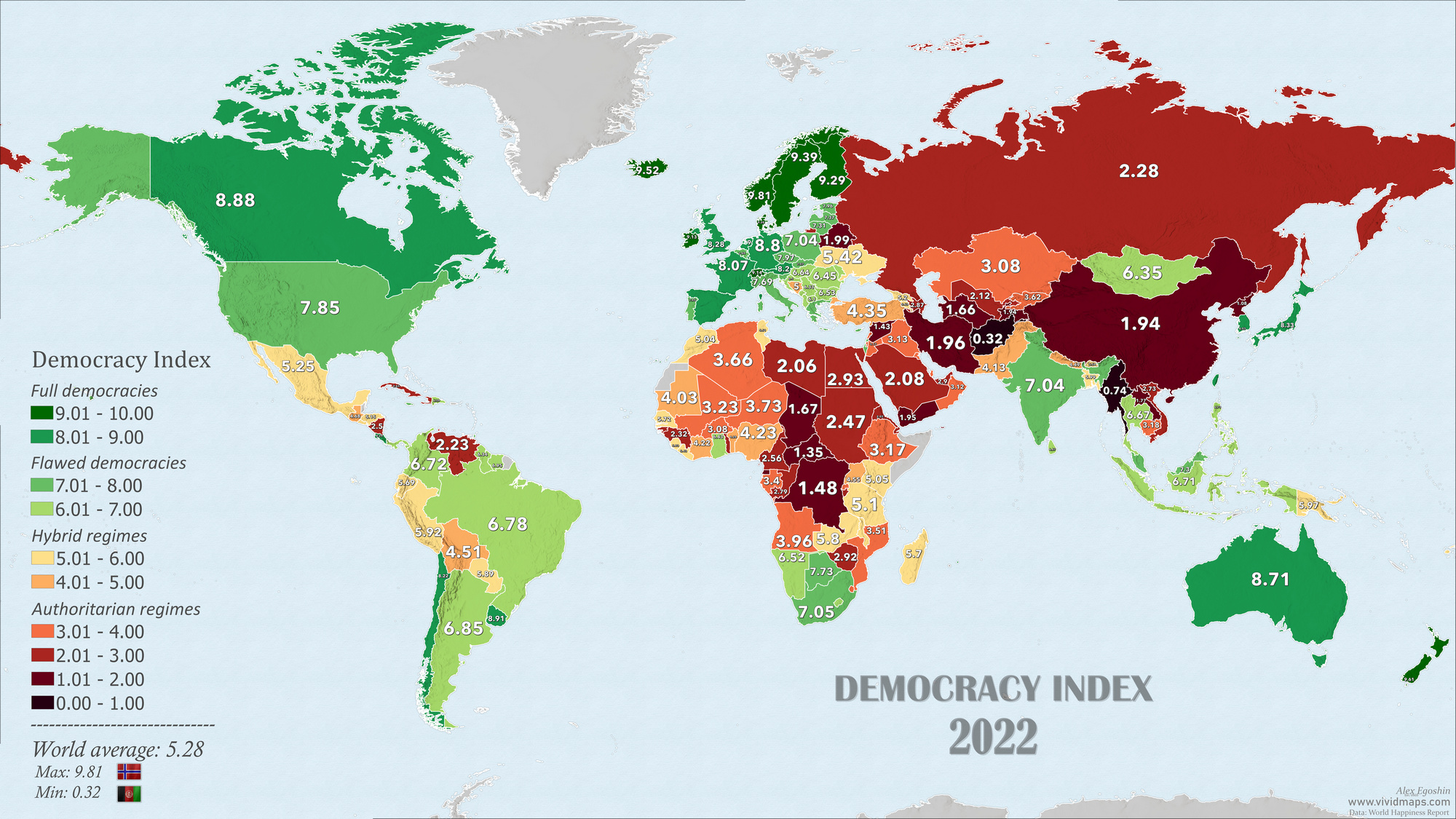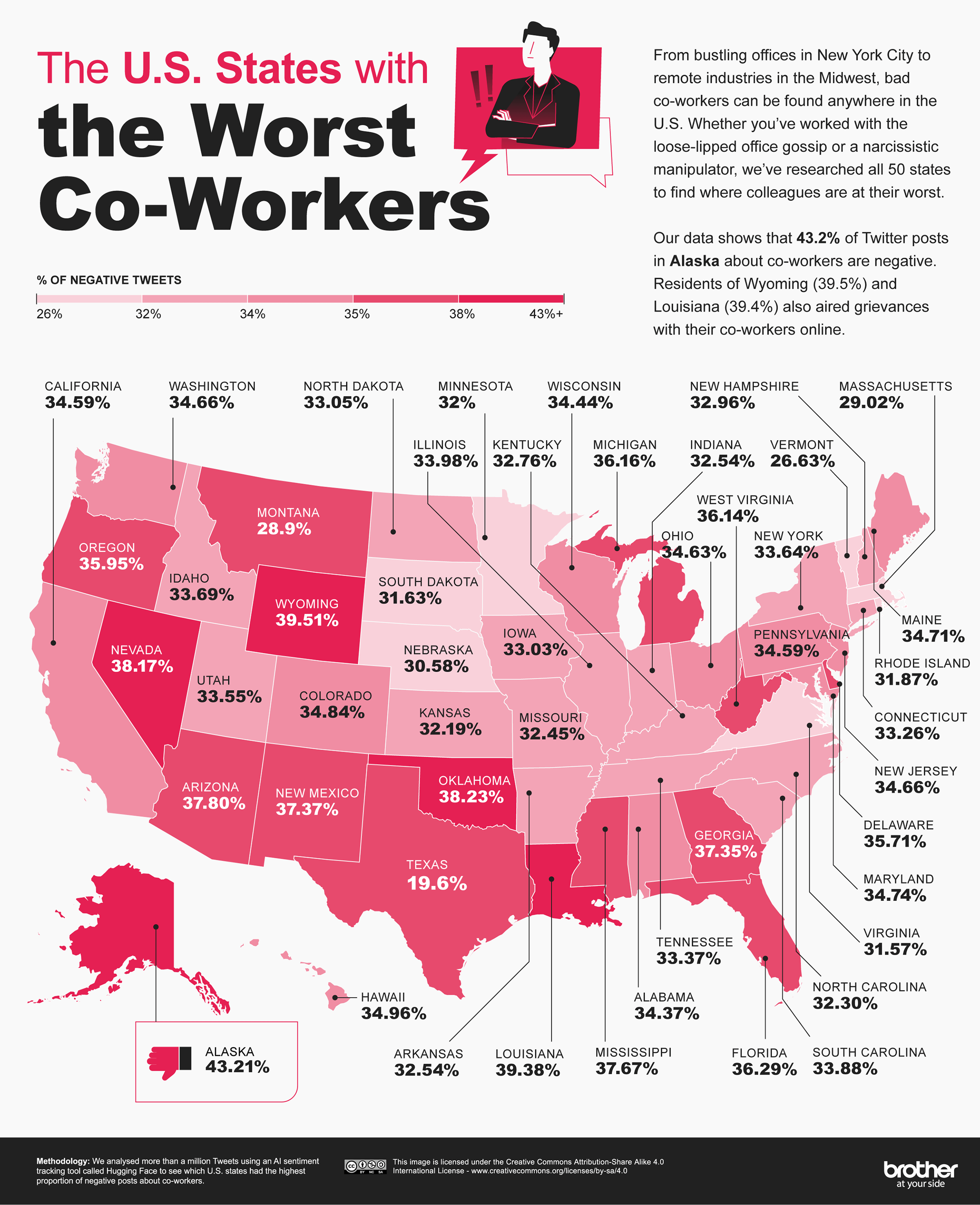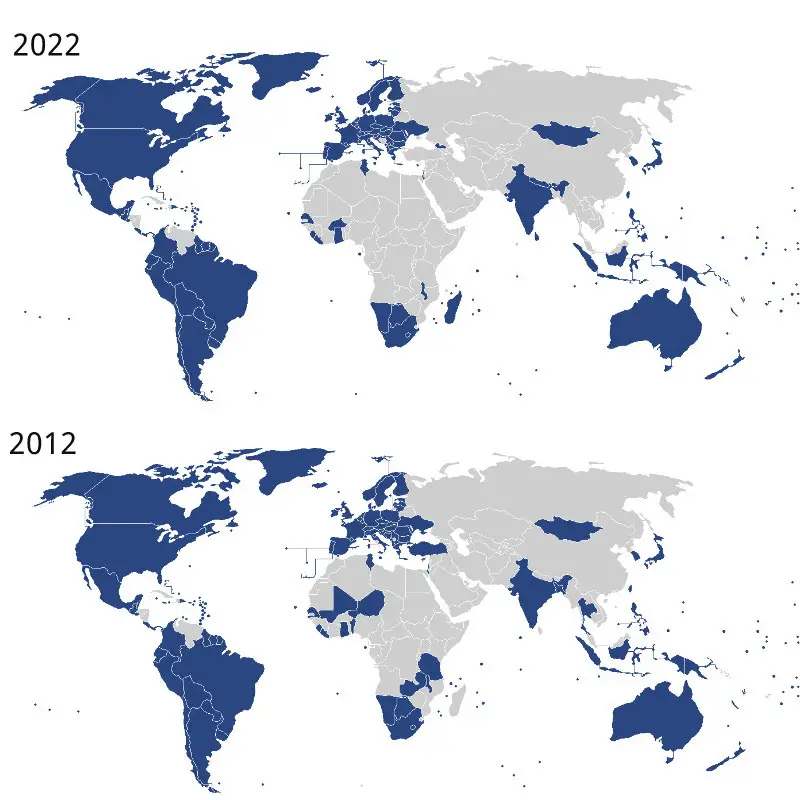Democracy Index (2017)
This post may contain affiliate links. As an Amazon Associate, we earn from qualifying purchases.
In the 2017 Democracy Index, the average global score fell from 5.52 in 2016 to 5.48 (on a scale of 0 to 10). Some 89 countries experienced a decline in their total score compared with 2016, more than three times as many as the countries that recorded an improvement (27), the worst performance since 2010-11 in the aftermath of the global economic and financial crisis. The other 51 countries stagnated, as their scores remained unchanged compared with 2016.
In the 2017 Democracy Index, not a single region recorded an improvement in its average score compared with 2016. The average regional score for North America (Canada and the United States) remained the same. All the other six regions experienced a regression, as signified by a decline in their regional average score. In a reversal of recent trends, Asia and Australasia were the worst-performing regions in 2017. The star performer of recent years experienced a decline in its regional average score for the first time since 2010-2011 when it also regressed in the aftermath of the global economic and financial crisis.
Almost one-half (49.3%) of the world’s population lives in a democracy of some sort, although only 4.5% reside in a “full democracy”, down from 8.9% in 2015 as a result of the US being demoted from a “full democracy” to a “flawed democracy” in 2016. Around one-third of the world’s population lives under authoritarian rule, with a large share being in China.
According to the 2017 Democracy Index, 76 of the 167 countries covered by the model, or 45.5% of all countries, can be considered to be democracies. The number of “full democracies” has remained at 19 in 2017, the same as in 2016, when the total declined from 20 in 2015 as the US fell into the “flawed democracy” category. The score for the US fell to 7.98 in 2016, reflecting a sharp fall in popular confidence in the functioning of public institutions, a trend that predated—and aided—the election of Donald Trump. Of the remaining 91 countries in our index, 52 are “authoritarian” and 39 are classified as “hybrid regimes”.

Source: The Economist Intelligence Unit
DEMOCRACY INDEX 2017
Full democracies
1. Norway – 9.87
2. Iceland – 9.58
3. Sweden – 9.39
4. New Zealand – 9.26
5. Denmark – 9.22
6. Ireland – 9.15
7. Canada – 9.15
8. Australia – 9.09
10. Finland – 9.03
11. Switzerland – 9.03
12. Netherlands – 8.89
13. Luxembourg – 8.81
14. Germany – 8.61
15. United Kingdom – 8.53
16. Austria – 8.42
17. Mauritius – 8.22
18. Malta – 8.15
19. Uruguay – 8.12
20. Spain – 8.08
Flawed democracies
21 South Korea – 8
22 United States of America – 7.98
23 Italy – 7.98
24 Japan – 7.88
25 Cabo Verde – 7.88
26 Costa Rica – 7.88
27 Chile – 7.84
28 Portugal – 7.84
29 Botswana – 7.81
30 France – 7.8
31 Estonia – 7.79
32 Israel – 7.79
33 Belgium – 7.78
34 Taiwan – 7.73
35 Czech Republic – 7.62
36 Cyprus – 7.59
37 Slovenia – 7.5
38 Lithuania – 7.41
39 Greece – 7.29
40 Jamaica – 7.29
41 Latvia – 7.25
42 South Africa – 7.24
43 India – 7.23
44 Timor-Leste – 7.19
45 Slovakia – 7.16
46 Panama – 7.08
47 Trinidad and Tobago – 7.04
48 Bulgaria – 7.03
49 Argentina – 6.96
50 Brazil – 6.86
51 Suriname – 6.76
52 Philippines – 6.71
53 Ghana – 6.69
54 Poland – 6.67
55 Colombia – 6.67
56 Dominican Republic – 6.66
57 Lesotho – 6.64
58 Hungary – 6.64
59 Croatia – 6.63
60 Malaysia – 6.54
61 Mongolia – 6.5
62 Peru – 6.49
63 Sri Lanka – 6.48
64 Guyana – 6.46
65 Romania – 6.44
66 El Salvador – 6.43
67 Serbia – 6.41
68 Mexico – 6.41
69 Indonesia – 6.39
70 Tunisia – 6.32
71 Singapore – 6.32
72 Hong Kong – 6.31
73 Namibia – 6.31
74 Paraguay – 6.31
75 Senegal – 6.15
76 Papua New Guinea – 6.03
77 Ecuador – 6.02
Hybrid regime
78 Albania – 5.98
79 Moldova – 5.94
80 Georgia – 5.93
81 Guatemala – 5.86
82 Fiji – 5.85
83 Honduras – 5.72
84 Ukraine – 5.69
85 Montenegro – 5.69
86 Zambia – 5.68
87 Mali – 5.64
88 Benin – 5.61
89 Macedonia – 5.57
90 Bolivia – 5.49
91 Malawi – 5.49
92 Tanzania – 5.47
93 Bangladesh – 5.43
94 Liberia – 5.23
95 Nepal – 5.18
96 Kenya – 5.11
97 Kyrgyz Republic – 5.11
98 Madagascar – 5.11
99 Uganda – 5.09
100 Bhutan – 5.08
101 Turkey – 4.88
102 Morocco – 4.87
103 Bosnia and Hercegovina – 4.87
104 Burkina Faso – 4.75
105 Lebanon – 4.72
106 Sierra Leone – 4.66
107 Nicaragua – 4.66
108 Thailand – 4.63
109 Palestine – 4.46
110 Nigeria – 4.44
111 Pakistan – 4.26
112 Armenia – 4.11
113 Iraq – 4.09
114 Gambia – 4.06
115 Haiti – 4.03
116 Mozambique – 4.02
Authoritarian
117 Cote d’Ivoire – 3.93
118 Jordan – 3.87
119 Venezuela – 3.87
120 Kuwait – 3.85
121 Myanmar – 3.83
122 Mauritania – 3.82
123 Niger – 3.76
124 Comoros – 3.71
125 Cambodia – 3.63
126 Angola – 3.62
127 Gabon – 3.61
128 Cameroon – 3.61
129 Algeria – 3.56
130 Ethiopia – 3.42
131 Egypt – 3.36
132 Cuba – 3.31
133 Congo (Brazzaville) – 3.25
134 Qatar – 3.19
135 Rwanda – 3.19
136 Russia – 3.17
137 Zimbabwe – 3.16
138 Guinea – 3.14
139 Belarus – 3.13
140 China – 3.1
141 Vietnam – 3.08
142 Kazakhstan – 3.06
143 Togo – 3.05
144 Oman – 3.04
145 Swaziland – 3.03
146 Djibouti – 2.76
147 Bahrain – 2.71
148 United Arab Emirates – 2.69
149 Azerbaijan – 2.65
Source: The Economist Intelligence Unit








